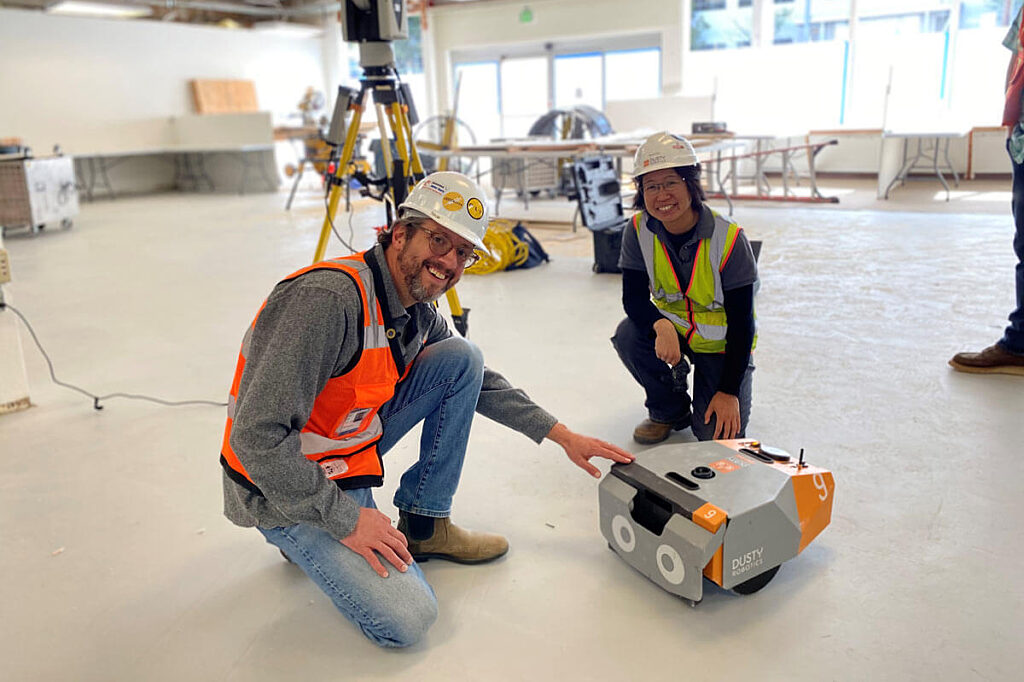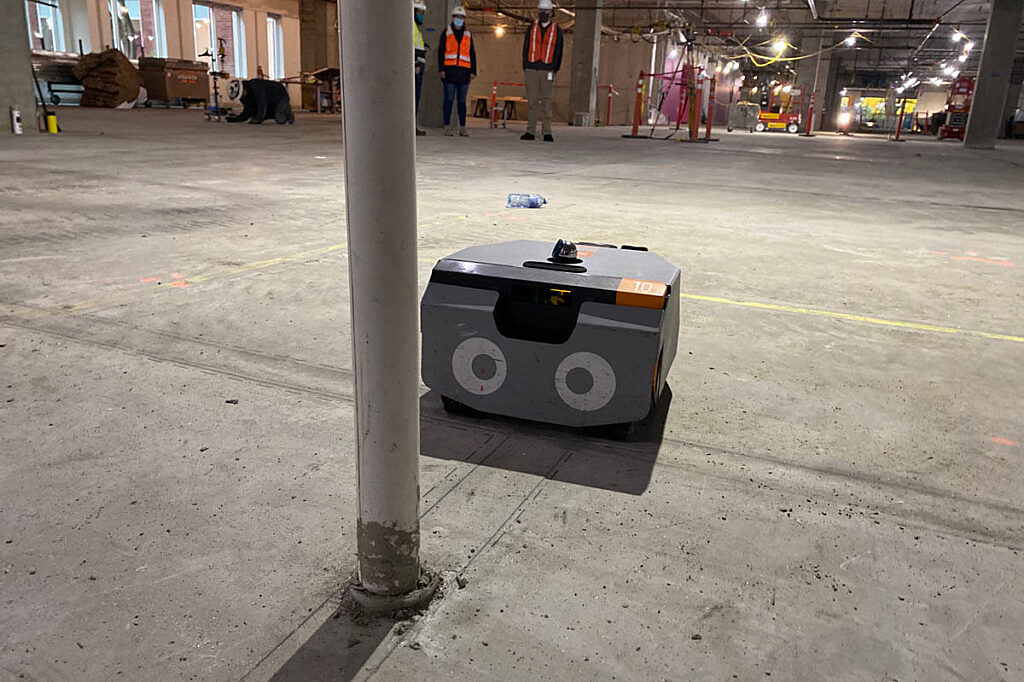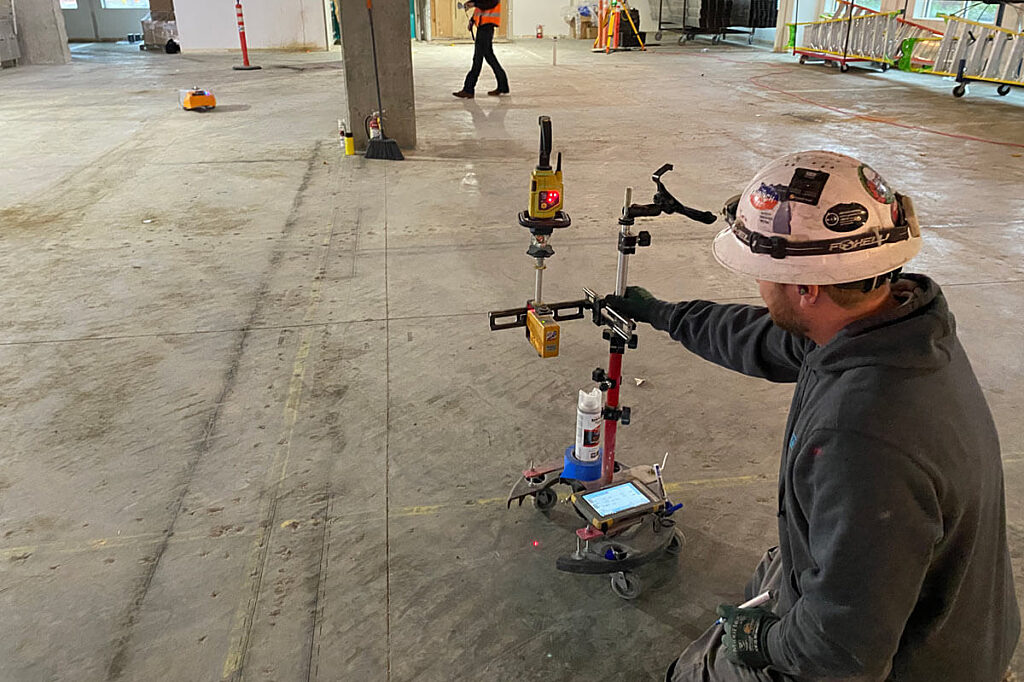Sustainability

Insights 02.01.2024
Key Considerations for Going Electric


Jackson Reid
Demetrios Stamatakis


A safer jobsite, increased productivity, and high quality results…three key priorities we take into account when we consider the use of advanced technology in our construction processes. Leveraging tools that can improve all three of these areas certainly has our undivided attention, which is why automation and robotics are rightfully among the mix of GLY’s R+D efforts.
Construction may be more dynamic and unpredictable than a factory environment, but humans and robots can still be a win-win scenario. Robots do the physically strenuous tasks, and we rely on human knowledge and experience to figure out the best way to do the task. When something in the built structure needs to change from the original drawing, people have the analytical skills necessary to determine which adjustments to make.
Enter Dusty, an automated layout and printing robot from California-based Dusty Robotics.
Robotic layout has been a dream, promising workers less hardship on the knees and joints, greater precision, faster timelines, and even exact as-builts at the end of construction. Everyone from layout crews to clients stands to benefit. So, for the past three months, under the watchful eyes of GLY’s Layout Superintendent, Dan Frye, and R+D Manager, Adam Cisler, Dusty’s been laying out interior buildouts using 3D models for multiple clients in the corporate office and healthcare sectors.

GLY R+D Manager Adam Cisler with Amber #9 layout robot and Dusty Robotics CEO Tessa Lau.
This testing has been pragmatic, as we always try to be for new innovations. Are the promises true? Can we develop best practices? Can the robotic approach improve worker safety and client outcomes? We’ve learned a lot after letting the robot navigate 100,000 square feet of floor area. Here are some observations and recommendations to drive a successful robotic layout process:
Layout professionals remain as important as ever. At GLY, these technicians are union Carpenters and Operators who specialize in layout. The job now involves operating and maintaining the complex new robotic tool.
Dusty is a tool, and still requires an expert for great results.
The robot will mark the floor from the model or CAD, so you need to complete and update the digital drawings before you start—no placeholder dimensions or wall types! That means finalizing every design choice or field question that could affect layout. However, if a coordination issue did exist in the marked layout, you could find it more easily because it would be right in front of you.
Accurate as-builts are important. An unexpected column, or something small like an embed, might impede Dusty or cause it to lose positional lock. We walk and spot-check the space in advance to make sure every condition is marked in the digital as-built drawings. Once GLY lays out a floor, the markings provide useful starting point for subcontractor layouts, which might use the traditional methods. This adds to their precision as well.
Everything is easier if you start layout with a clean, empty, dry floor relatively free of workers. If that’s asking too much, the machine can lay the space out in sections. This is a critical factor in scheduling and logistics plans. Layout should occur before trades start moving in and stacking materials. Dusty doesn’t have sensors like a Roomba, though future models will.

The robot can draw lines within 1/16″ of a vertical obstacle, such as this pipe, aided by a swing-out print head.
GLY will continue to assess Dusty and other new models. So far, the signs look positive from a layout person’s, contractor’s, and client’s perspective.
At the full adoption stage we would expect some cost benefit from a robotic system due to the efficiency and speed of the layout process, after the initial cost of the robot and peripherals. Cost risk will also be reduced at the project level by avoiding errors and rework.
Are layout robots here to stay? We think so. But to enhance the human touch, not replace it.

A subcontractor using traditional layout methods [photographed with his permission].
Have questions about robotic layout? Reach out to GLY Layout Superintendent Dan Frye.
Tags:

Layout Superintendent
Dan is GLY’s go-to guy for anything and everything relating to site surveys and layout. As a consummate team player and expert on layout technology, Dan is responsible for not only planning and coordinating project needs with superintendents, but also for training and educating the GLY Layout Crew and helping The Yard with long range equipment planning. When he’s not out in the field, Dan is 100% family man, spending as much time with his wife and kids as he can.